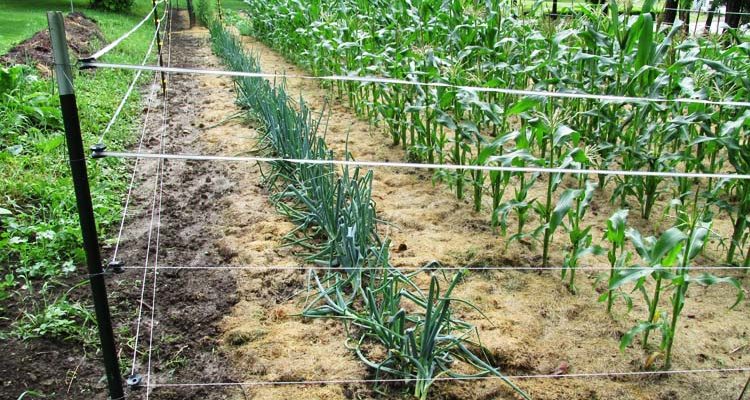Betty’s Garden Diary Revisited!
Preface
Greetings fellow Weelunk gardeners! This is a follow-up to the “Betty’s Garden Diary” series that my wife, Betty, and I published on Weelunk last year. Since we stopped doing the Garden Diary, a lot of folks have asked why it was discontinued and have made comments about it. Betty and I are very thankful for all of those nice comments. From the beginning, the goal was to follow the events in a typical vegetable garden for one year by publishing a monthly series of articles. Our hope was that we could encourage other folks who were new to gardening. The purpose of this article is give you an update on our 2017 garden.
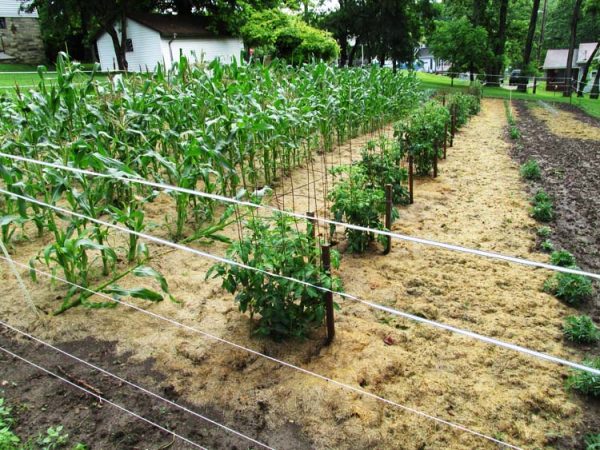
Our tomatoes are doing well, but we are a few weeks away from enjoying a fresh BLT. The row on the right is marigolds which Betty planted since we had the space!
“Do you have a garden this year?”
Yes! We have a garden again this year. However, we have downsized it just a little because we were so richly blessed last year. This year, we did not plant any green beans because we still have fifty or sixty quarts of canned green beans on the shelf from last year and the year before. Last year, we had four different plantings of sweet corn. This year, we have only two. One planting consists of Early Sunglow and the other consists of Ambrosia hybrid. We took a risk and planted those around the first of May. The mid-May frosts missed us and our early sunglow is coming in tassle as I write this on June 18. Last year, we gave away a ton of cucumbers and canned only seven quarts of dill pickles because we had not planted any dill. This year, we are growing dill because those homemade dill pickles are delicious! Last year, we had twenty tomato plants consisting of five varieties. This year, we have twenty tomato plants, but have reduced to three varieties: Early Harvest, Rutgers, and Big Boy. We still have a ton of canned tomatoes, tomato juice, and canned salsa, but I love to grow tomatoes! The Early Harvest plants have tomatoes on them which should be ripe in a couple of weeks. Last year, we planted five or six sweet potato plants as an almost afterthought. We had the last of the sweet potatoes from those for dinner yesterday! This year, we set out about a dozen sweet potato plants. We grew those sweet potato plants by sticking a sweet potato into a cup of water and then rooting the sprouts. They are small, but doing well. We did not plant any white potatoes this year .
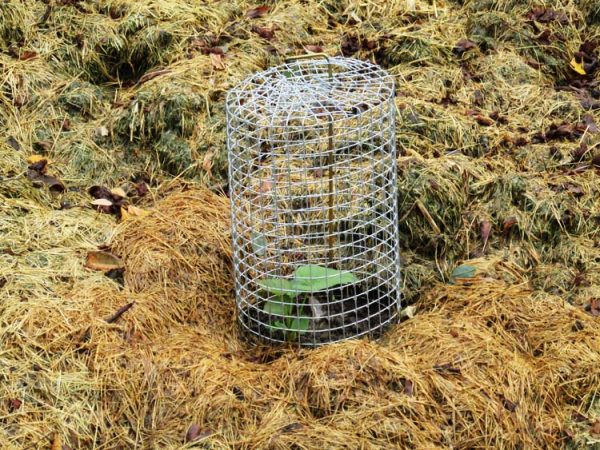
Sweet Potato Plant – We will remove the protective cage soon.
Last year, we set out around 20 cabbage plants of the variety called Stonehead. After a rain shower, the heads started to split, so we had to harvest them even though they weighed only about four or five pounds each. We still ended up with 44 quarts of homemade sauerkraut. This year, we planted about 20 cabbage plants of the variety called Flat Dutch. When we grew Flat Dutch three years ago, some of the heads weighed eight or nine pounds and they made great sauerkraut. We still have a lot of sauerkraut on the shelf, but I love making it! We were not going to grow any zucchini this year, but we had some space left, so we planted some zucchinis just last week. Thanks to a couple of recent rain showers, it is up, but is still very small. One of my friends from the Wheeling Area Habitat for Humanity group already has tomatoes and zucchinis from his garden! Last year, we had our drip irrigation system running from Court Spring because the weather was so dry at this time of year. So far God has watered our garden regularly this year and we have not yet set up the drip system.
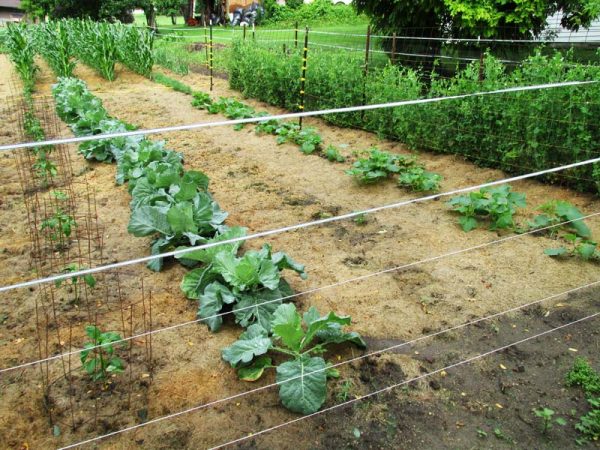
Peppers in Cages, Cabbages, Cucumbers and Sugar Snap Peas.
A couple of weeks ago, I accidentally knocked the bottom electric fence wire out of a T-Post insulator while I was using a string trimmer near it. We failed to notice the wire on the ground, so the fence shorted out and several deer visited our garden that night. They grazed off some of the branches on a few of our tomato plants, but the real damage was to our sugar snap peas which they ate back to about two feet high. They consumed some of the plants completely. We discovered the problem with the fence after seeing the damage and also added two more wires to make the electric fence higher. One friend told me that our electric fence now looks like the perimeter fence at a POW camp! So far, it has kept the deer from making another visit! In spite of the damage, the sugar snaps have peas on them and we should be enjoying those in a few days.
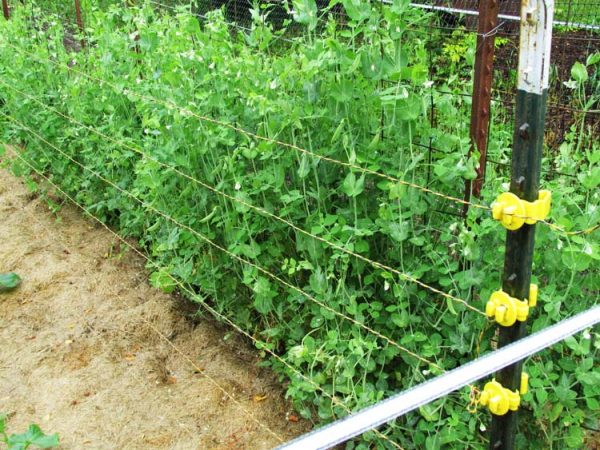
Sugar Snap Peas – Only a Few More Days!
Several of the folks who have talked gardening with me during the last few weeks have asked about our use of fertilizer, especially on our sweetcorn. If you read the October edition of Betty’s Garden Diary last year, then you will recall that we had the folks at the WVU soil lab do a soil test for us which indicated that our garden had extremely high levels of phosphorous and potassium. Adding more phosphorous or potassium would be detrimental to our productivity, so I visited Dale Sampson’s feed store in West Liberty and purchased a bag of urea fertilizer which has no phosphorous or potassium and consists of 46 % nitrogen. Nitrogen fertilizer helps plants grow leaves and stalks, so we scattered a tiny amount along our corn rows and incorporated it with a rake. We also very lightly fertilized our cabbages and onions with some of the urea. Since we used only about a quart of the urea for our corn, cabbages, and onions, that 50 pound bag of urea is almost a lifetime supply! Urea soaks up moisture from the air and becomes soggy, so we stored it by sealing it into one gallon zipper bags and then putting those into a large plastic tub with a lid. Do not put urea on tomatoes, peppers, beans, peas, melons, cucumbers, etc. If you do, you will grow large plants with no fruit or with very late fruit!
The June, 2016 issue of the Garden Diary included a section on the use of mulches. As you may recall, we mulch our garden heavily using grass clippings. Thankfully, some of our neighbors are more than happy for us to mow their lawns and collect the clippings for our garden! We try to have a layer of clippings about two inches thick or more. Within a few weeks, those break down into an inch or less of cover. A little nitrogen leaches out of them and contributes to the plant growth, but the main advantage is water management. Right now, the soil surface in our garden is damp under the clippings, but it dries quickly where there are no clippings. When it rains, they slow down the runoff thereby reducing erosion while increasing absorption. The blanket of grass clippings greatly reduces surface evaporation thereby providing more available water in the soil for a longer period of time.
Betty and I are grateful to everyone who has said so many kind things to us about the Garden Diary series. The reason that we ended it was that we felt that most of what we would be posting if we continued would just be a repeat of what we posted last year. All of the issues of Betty’s Garden Diary from last year are still available on Weelunk. Just type “Betty’s Garden Diary” into the search box on the site.


